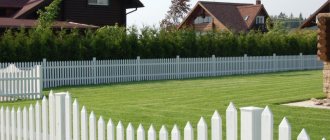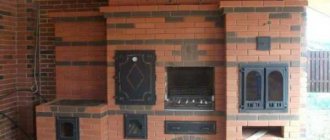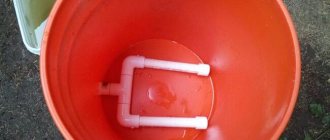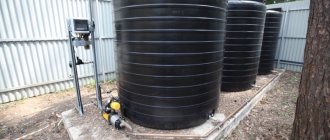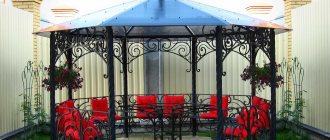Review author: Terrari School of Design
Over the past few decades, the life of the world's population has changed significantly. Thanks to progress, a person’s work has become significantly easier and time is saved. Modern technologies and innovations have touched literally all spheres of life.
They did not bypass agriculture either. Caring for plants has now become much easier and more efficient. So, for example, now you don’t have to monitor the watering of plants, but use a special device for these purposes - timers for automatic watering.
Let's look in more detail: what is an irrigation timer and why is it needed.
Design and principle of operation
Visually, the watering timer resembles a regular water meter. The device has a special mechanism or program that allows you to set up an individual operating plan for the device - program a watering schedule. The device body is made of strong and waterproof materials.
Timers for gravity systems are usually mobile devices that can be easily moved and usually do not require power from the electrical network, which is especially true for large areas.
The essence of the operation of a self-timer is similar to a shut-off valve. One side of the device is connected to a water pipe, and the other to a regular watering hose.
At the set time, the timer opens a shut-off valve similar to a ball valve and water flow begins, which irrigates the required area. And when the watering work is completed, the hole closes and watering stops.
Additional features
Together with electronic timers, you can install additional sensors, which will greatly facilitate the setup of the device:
Rain sensor. It can record natural precipitation. If necessary, the timer can skip one watering.
Such a sensor allows you to set the amount of precipitation from which you need to turn off watering. This makes it possible not to skip watering during light precipitation. Thanks to this sensor, you can avoid unnecessary watering and save water.
Diaphragm pump. It can be built-in or sold separately. Allows you to monitor the water level in the storage tank. When the minimum is reached, the pump turns on and fills the container. After which it will automatically turn off.
Radio channel sensor. Measures soil moisture in an area. If the soil moisture is sufficient, it will cancel the start of watering. In this way, it is possible to increase productivity, since there will be no excess moisture on the site.
Water purification filter. Thoroughly purifies the water, so the timer can last much longer.
The listed sensors can be included as standard or purchased additionally.
The gravity irrigation system is very convenient. Adding a timer to it will avoid the need to frequently be present at the dacha to turn the watering on and off. At the same time, the soil will always be sufficiently moistened, which will allow you to get an excellent harvest.
Varieties
There are several types of watering timers, differing in many respects. A certain type of controller will have both its pros and cons.
It is also worth considering that one timer may be convenient for a certain type of work, while in other circumstances it will not be suitable at all.
Device characteristics
In size, timers for supplying water for irrigation rarely exceed standard standard meters. Although modern electronic modifications with extensive functionality and large displays superficially resemble controller control panels. The main task of the timer is to regulate the supply of water over time, but, as a kind of barrier element, they are primarily characterized by throughput. On average it is 5-35 l/hour. As for the maintained pressure, this value varies from 0.2 to 12 bar on average. It is important not to forget that the battery-powered watering timer has a limited duration. Moreover, watering rates are calculated based on operating sessions. The time range for one-time watering is about 180-230 minutes. To this indicator it is worth adding the number of daily approaches to feeding. It is also limited - standard models allow installation for 3-5 sessions.
Timer for mechanical drip irrigation
A timer for mechanical drip irrigation is a fairly easy-to-use device, the operating principle of which can be compared to the operation of a simple watch or the very first microwave ovens.
The main mechanism of mechanical watering timers operates on a spring, which can provide continuous watering for an entire day. Disadvantages of this type:
- Watering must be controlled;
- All settings are made manually;
- There is no digital display/screen on the case;
- As a rule, on such timers you can only set the shutdown time, that is, you need to turn on the water supply yourself.
Among the advantages, it is worth highlighting the following:
- Low price;
- Durability of the mechanism;
- Ease of operation: setting up the device is easy to understand; for operation, the device does not need to be connected to an electrical outlet or powered by batteries/accumulators.
What equipment is needed to assemble an automatic irrigation system?
To assemble such systems, it is first necessary to determine the number of consumers (plants), draw up a plan for the placement of system components and calculate the approximate fluid consumption.
Next, you need to purchase the following equipment and materials:
- drip irrigation timer;
- drip irrigation tape;
- polypropylene pipes for supplying water to the belts;
- pipe clamps and clamps;
- plugs;
- valves and fittings;
- reduction and rotary knees;
- seals;
- connecting elements.
These materials can be purchased separately. However, if you are not an expert in this field, then it is better to purchase ready-made kits, in which the number of certain elements for irrigating a certain area is calculated in advance.
Electronic self-timer with manual control
It starts and stops the water supply independently - the user only needs to program the device by setting his own watering schedule and periodically adjust it if necessary. Flaws:
- The cost is slightly higher than mechanical ones;
- Inability to connect several devices at the same time (for example, connect an additional humidity sensor, which helps reduce water consumption);
- It is necessary to monitor the batteries and replace them promptly.
Advantages:
- Using such a timer, you can set up both automatic watering and water supply;
- Does not require electricity supply;
- Safe;
- There is an information board on the body;
- Simple and easy to use.
What should the controller do?
To decide whether you need a timer, you need to know exactly what tasks it can perform:
- the controller controls the entire system;
- starts and stops water;
- provides several watering lines simultaneously;
- monitors the operation of the motor;
- can turn on (or not turn on) independently, without a specified time program, determining the humidity level using a special sensor. For example, when it rains, the device will turn off watering.
Digital timer with intelligent control system
Digital timer with an intelligent control system (electronic irrigation timer with programmed control) is the most functional and modern model. You can even control it from your mobile phone or via the Internet. Disadvantages of this type:
- High price;
- Not everyone finds it easy to understand the basic functions and capabilities of the device. In order to set it up, you must first carefully study the instructions.
The main advantages include the following:
- Fully automated operation of the system;
- Operates on batteries or rechargeable batteries;
- There is no need for a person to be near the device;
- There is a screen;
- The device can be programmed for several different tasks at once and additional sensors can be connected to it.
What are the advantages of a water supply timer?
Most farmers and summer residents strive to reduce the time spent on watering and irrigating plants by introducing an automation system. To solve this problem, you can choose a highly efficient watering timer that can not only organize automatic watering in the greenhouse, eliminating the need to use buckets and hoses, but also provide the plants with the optimal amount of moisture and fertilizer to obtain the best harvest.
By using such systems, you can get the following advantages:
- efficient consumption of water resources;
- fully automated irrigation system using electronic timers with programmable control;
- control of soil moisture to protect the root system of plants from excess moisture;
- a wide range of options for customizing the irrigation program for specific types of plants;
- reliability of functional units.
Types of mechanisms in electronic timers
Mechanical timers for watering plants are still not so convenient, and therefore electronic devices are more popular. The water supply to them is regulated using a special mechanism. Therefore, electronic controllers can be divided into 2 categories:
Ball timer: This device has a special ball installed that automatically rotates to start the water supply. A large pressure of liquid flow is not required; from 0 to 6 atm is sufficient.
It is best to choose a ball controller when using a sprinkling and drip irrigation system, as well as in areas where it is not possible to connect to a centralized water supply.
Timer with an electromagnetic (solenoid) valve: there is a disk or piston on the core of the device that is responsible for regulating the flow. It is advisable to use controllers of this type if there is a central water pipeline, since in order to supply water and water the plants, it requires good water pressure.
Which to choose?
To choose the right timer, you need to know which system it will connect to and which areas to water. There are several criteria to consider.
Water supply mechanism:
- If water is supplied from a water supply system, it is recommended to install a device with a solenoid valve. It can withstand high pressure and shuts off the pipe when the water is turned off, preventing the formation of air pockets.
- In the case of a gravity system, when water is supplied from a barrel or other container, you can purchase a timer with a ball valve.
Fully mechanical timers are mostly not suitable for gravity irrigation systems, as they operate at a pressure of 0.5 atm.
Options:
- The simplest timer is with the ability to set watering time for a day. Suitable for a small greenhouse or summer cottage.
- Multi-program models with 4, 6, 8, 14, 16 and other number of programs are purchased for spacious greenhouses, greenhouses, and large areas.
They usually provide additional functions. Such programmers use water more economically and create optimal conditions for growth. - Self-diagnosis functions and built-in memory may be provided that retains settings even during a long power outage.
- Some devices have rain sensors (or they can be purchased and connected separately). They give a signal to turn off irrigation in case of precipitation.
- There are models in which a mini-pump is connected and a filter is installed.
- An additional plus is that the kit includes a quick-release fitting, which makes it easy to connect a hose or pipe for watering.
Number of valves:
- for small areas a 1-2 line timer is suitable;
- those who grow crops that require different watering regimes should take a closer look at multi-channel timers.
Other criteria:
- Take into account whether the timer is powered by the mains or runs on batteries. The batteries need to be changed periodically, but they will help out if there is a sudden power outage.
- Pay attention to the control panel. What is important here is the convenience of the location of the switches, the size of the monitor and the numbers displayed on it, and the presence of protection from moisture.
- There are devices powered by a solar battery. They must be placed in a lighted area.
It is also worth paying attention to reviews from other users and the reputation of the brand. The company re-releases some models, improving and adding new features. Pay attention to the guarantee and the ability to return the timer in case of defects.
Installation recommendations
For proper installation, first carefully read the product data sheet, study in detail the photo of the assembled watering timer, if in any doubt, find and watch the video instructions or contact a specialist.
But, basically, setting a timer for watering plants is not difficult, but it is still worth taking into account a few small nuances:
Before installation, divide the irrigation area into separate blocks, taking into account the crops being grown - this way it will be easier to correctly distribute the watering time.
In order for the timer to serve the user for a long time, most manufacturers recommend installing a mud filter, which will trap particles (small stones, debris, sand, etc.) and they will not damage the mechanism.
When connecting the device to the system, it is necessary to observe the direction of water movement, which is determined using the arrows at the input and output of the controller, otherwise it will not work properly.
During installation, it is necessary to take into account that depending on the design of the irrigation system (single-channel or multi-channel), the timer connection diagrams may be different.
For example, when using a multi-channel system, it is necessary to additionally install a pump or, in some cases, even a pumping station to increase the pressure in the system.
TOP best
The approach to choosing timers depends on what tasks are set, how large an area needs to be watered, and what crops are grown on it. In general, any timer will help save water. It is important that it does not leak, lasts as long as possible, and consistently passes water when the pressure in the system fluctuates.
Mechanical
This rating includes timers, which are often purchased by summer residents for small areas. All models are manually adjustable and have a low price.
GARDENA 1169-20
The cost of the device varies between 1700-2300 rubles, depending on the season and the availability of discounts. The timer is connected to a water tap and operates at a pressure of 0.5-12 bar. It supplies water to sprinklers or drip lines, including the Micro-Drip-System from GARDENA.
The switching time is regulated by a rotary switch in the range of 5-120 minutes . It can also be set to constant flow. According to reviews, the timer is easy to use and reliable. A 19 mm (3/4") thread is provided for connecting the hose.
PALISAD Luxe 66197
It is designed to connect two lines at once, and is completely mechanical and does not require batteries. Watering can last up to 2 hours in 15 minute increments. After this, the water is automatically shut off. Each line is configured separately.
The kit includes a filter and an adapter with a ¾-inch internal thread , which allows you to connect to a pressure water supply. The cost of this device is about 900 rubles.
Grinda article 8-427805
The device is simple and inexpensive - it costs about 700 rubles. Reviews about it are quite friendly. The timer is often used in country greenhouses so as not to monitor watering and stop it in a timely manner. The kit includes an adapter that allows you to connect the device to a pipe or tap with an external thread of 3/4" (19 mm) or 1" (25 mm).
A mesh filter is installed to protect against small blockages . The maximum duration of watering is 2 hours, the minimum is 15 minutes. For the next start, manual winding is required.
DON GAZON 096-0202
Manufacturer – Russia. Another mechanical device at a price of 700-800 rubles. The handle adjusts the duration of watering, which traditionally ranges from 15 minutes to 2 hours. After this, the water is shut off, which eliminates the need to monitor soil moisture.
KARCHER WT 2
A timer from a well-known German brand with the ability to connect three hoses will cost approximately 1800-2000 rubles. The device is reliable and stable . Setting range from 5 minutes to 2 hours.
After the specified watering time, it turns off the water. Can work as a distributor. Supplied with three fittings, a faucet adapter and a filter. The company provides a 5-year warranty.
Electromechanical
These timers, although manually controlled, already have a convenient digital display. Their cost is higher than that of purely mechanical ones.
MPF article DS.070956
The price on Ozone for this model varies from 1200 to 1800 rubles. Ball valve shut-off mechanism. Powered by two AAA batteries, designed for pressure 0-6 atm . Made in a waterproof case.
The duration of watering (1 - 120 minutes) and frequency (1 hour - week) can be programmed. The instructions are quite clear, adjusting the knobs does not cause any problems.
Green Helper GA-319N
The ball valve timer runs on two 1.5 V mini-pen batteries and is controlled mechanically . Costs about 1500 rubles.
The device can withstand pressure from 0 to 6 atm. Can be used with a gravity system. The watering interval (1-72 hours or every other week) and duration (from 1 to 120 minutes) are separately set. Reviews about the device are mixed. Some people like it and are completely satisfied, but there are complaints about leaks.
Signor Tomato
Like most electronic-mechanical timers, this one is designed to operate from a barrel or water supply. Can be used in conjunction with a drip irrigation system . Its price is about 1700 rubles.
The control unit is powered by two AAA batteries. By rotating the settings knobs, you can select the optimal duration of watering and frequency (after how many hours the next one will start). The kit comes with clear instructions in Russian. The company itself is Russian and specializes in the production and supply of equipment for greenhouses.
KARCHER WT 4
The Karcher electronic-mechanical device is sold at a price of about 2700-3300 rubles. The kit includes a faucet adapter and a strainer. A 9V crown battery must be purchased separately.
The handles are large and comfortable, the display can be removed, and programming is easy to understand . The maximum duration of one watering is 120 minutes. The interval is set in hours and days, which is very convenient. The service life of the timer is at least 5 years. Read reviews here.
RACO 4275-55/736
The price of such a device is 1700-2300 rubles. You can set up to 8 waterings per day with a minimum duration of 1 minute. The timer has a stylish design and comfortable handles, the quality is German. Powered by a 9V battery that lasts for a season. The control unit can be easily removed.
Fully electronic
In such devices, control is carried out entirely using the display. Some of them can be programmed via the Internet.
ArmaControl 322
This electrical appliance will cost 1100-1900 rubles. It works from 0 bar to 6 bar, that is, even with gravity flow . Ball valve. An additional rubber gasket is installed to maintain pressure without leaking water.
The timer can be used to water beds, trees, shrubs, and fill containers. It is powered by 2 mini-AA batteries. The external thread of the fittings is 3/4″; an adapter is connected from below, thanks to which you can connect a flexible hose. Watering duration is adjustable from 1 minute to 12 hours. Read reviews here.
Green Helper GA-322 Sensor
The timer is sold at a price of 1500-1700 rubles. It provides 8 programs for flexible irrigation settings, including drip irrigation. Often used in greenhouses . Designed for a gravity system; it is not recommended to connect it to a water supply. Working pressure is 0-3 atm. Ball mechanism. Read reviews here.
KARCHER WT 5
The device is sold at a price of 3,700-4,500 rubles, depending on seasonal discounts. The timer can operate in automatic mode if you set the frequency and duration of watering. A 9V battery will have to be purchased separately. Faucet adapter included. The device can withstand a maximum pressure of 10 bar. Not suitable for gravity system. Read reviews here.
GARDENA Flex 1890-29
A well-known German brand offers to purchase an electronic watering timer for 3100-3400 rubles. The operating pressure of the device is 0.5-12 bar . Powered by a nine-volt battery. Watering frequency is from 4 to 72 hours. The duration is smoothly adjustable and reaches 99 minutes. Read reviews here.
DEKO DKIT01
A timer with a solenoid valve sells for 1500-2200 rubles. The automatic mode provides for the duration of each watering from 1-120 minutes, the interval is from 1 hour to a week. A translucent lid is provided to protect against splashes. Not suitable for installation on barrels (in gravity flow systems). Read reviews here.
For a large number of watering zones
This list includes both electronic and mechanical models. They cover a large area and are expensive.
GARDENA MultiControl duo 1874-29
This model received the Reddot Design Award in 2012 for its high quality and unique design . It costs about 11,000 rubles. You can water two areas of the garden at once, and for each output you can program three different cycles per day.
Watering duration is 1 minute - 4 hours. It is possible to connect rain and soil moisture sensors from the same company. A battery charge indicator is provided. Operating pressure range 0.5-12 bar.
Distributor GARDENA 1197-29
You can buy such a device for automatic watering for about 8,000 rubles. A maximum of 6 hoses or other equipment can be connected to it. A multi-mode water supply valve is installed . If some exits are not needed, they can be closed using a lever.
Operates at a pressure of 1-6 bar. ¾ inch male thread. The entire installation is convenient, compact, installed on the ground or screwed to the wall. Read reviews here.
GA-Combo ArmaControl
This model is equipped with a 4-line splitter. It costs a little - about 1700 - 2000 rubles. Ball valve mechanism, electronic control. It’s not difficult to understand programming; the kit comes with instructions in Russian. The device runs on AAA batteries. The lid is sealed and reliably protects the electronics from moisture.
Controller Green Helper GA-350-11
The device has 10 solenoid valves, which makes it possible to independently humidify up to 10 zones . You can make the most of the features or block some channels. The controller is used outdoors, in a greenhouse, greenhouse, greenhouse. The device is sold at a price of about 4,400 rubles.
AP 4013 AQUAPULSE
The device costs about 8,000 rubles. Designed for watering zones 1-4. Electronic programming for 6 days ahead and convenient switches. Trade jersey Taiwan. You can set up to 16 different cycles.
They are saved in the device memory. The duration of each watering can be 1-240 minutes.
Advantages of irrigation automation systems
A smart timer will become an indispensable assistant in the household:
- Watering the plants will continue at the set time in the required quantity even during the absence of the owner;
- Thanks to such a system, water consumption will become more rational;
- The use of digital devices makes it possible to fully automate the irrigation system;
- Reliability and ease of operation.
Reviews of the model Gardena 01169
If you need a simple, but modern and reliable timer, then modification 01169 from Gardena may be a good solution. Experienced summer residents use it to carry out regular watering activities, using basic control tools. However, there are complaints about the limited duration of water supply - the range is set at 5-120 minutes. But this nuance is compensated by the accuracy of the mechanics. Reliability and reliability are the main advantages for which this watering timer is valued. Reviews, for example, indicate the use of a protective filter, which is rarely provided in entry-level models.
Watering timer photo
Reviews of the WT 5 Karcher model
If the previous timer can be positioned as a premium device at the entry level, then this device will most likely occupy a lower position in the segment of high-tech models. This is an inexpensive device with wide functionality - this timer can be considered as a control panel, but with some limitations. As for users, they note a wide range of settings and support for four operating modes. But, like the previous timer for the irrigation system, the proposal from Karcher offers a modest period of time for watering within a single session - 120 minutes. This is the case when functionality is expanded at the expense of performance, but such options are also in demand.
Water timer manufacturing options
When planning to install an automatic irrigation system on your property, it is convenient to use water timers to control the taps. With their help, the water supply system can be made completely energy independent, avoiding the use of any electronics.
Design #1 – timer with wick dropper
The wick fibers, when saturated with moisture, lift it up to a certain height, preventing the water from quickly evaporating. If the wick is thrown over the side of the container, the absorbed water will simply begin to drip from the free end.
This method is based on physical laws that create the capillary effect. It occurs when a fabric wick is lowered into a container of water.
The moisture throughput can be adjusted by adjusting the thickness of the wick, the density of twisting of the threads and pinching them with a wire loop.
To set up a timer, place a five or ten liter plastic bottle in a container with low sides, the height of which does not exceed 5-8 cm. One of the key operating conditions of the system is maintaining the liquid level in the container at a constant height. The optimal ratio of capacities is easiest to determine experimentally.
The determining factor in its operation is the water column. Therefore, the height of the bottle and the depth of the wide container are interconnected things
A small hole is made in the bottom of the bottle to allow water to flow out. The bottle is filled with water, temporarily covering the drain hole, and sealed with a lid. The filled bottle is placed in the trough. The water seeping through the bottom will gradually flow out, stopping at a level when the hole is not hidden under the thickness. As water is consumed, the water flowing out of the bottle will replenish the losses.
Recent Entries
Lilac perennials that are beautiful, compact and do not crowd out other plants Why when buying seedlings you should not take the sellers’ word for it and how to determine the age of the plant using 3 signs Tomato seedlings have turned purple or whitish: why the color has changed and how to save the plants
The easiest way to make the wick itself is from a rope of suitable thickness or a rope twisted from a piece of fabric. It is placed in a container with the ends correctly distributed
The main advantage of such a timer is that due to the same level of water in a wide container, in the event of rain, replenishment of moisture losses from the bottle will be suspended.
Craftsmen who have already tested such a device in practice claim that a five-liter bottle with a flow rate of 1 drop/2 seconds is enough for 20 hours of uninterrupted operation. By choosing the optimal size of the bottle that acts as a water column and adjusting the intensity of the drop, you can achieve the effect of multi-day delays.
Design #2 – device that regulates the ball valve
In a water timer, the response time is determined by the action of the drop. Water flowing out of the container, which acts as ballast, reduces the weight of the structure. At a certain point, the weight of the container is no longer enough to hold the stopcock handle, and the water supply starts.
To set up a water timer you will need:
- Water barrel;
- Ball valve;
- Two plywood or metal circles;
- Canisters or 5-liter plastic bottles;
- Construction adhesive;
- Spool of sewing thread.
For uninterrupted operation of the system, it is advisable to modify the ball valve by attaching a small pulley - a rocker arm - to a handle secured by a screw. This will allow you to move the tap from a closed state to an open state by changing the angle of the handle.
The pulley is constructed from two identical plywood circles, gluing their planes together with construction adhesive, or metal ones, connecting them with bolts. A strong cord is wound onto the pulley, making several turns around it for reliability. When constructing a lever, pieces of cord are firmly fixed at its edges. A ballast weight and a container of water compensating its weight are tied to the free ends of the cord on opposite sides. The weight of the load must be such that under its weight the crane comes into a lever state.
It is convenient to use five-liter plastic bottles as cargo ballast and a water container that compensates for its weight.
The easiest way to adjust the weight of containers is by adding sand to one of them and adding water to the other. Metal chips or lead shot can also serve as a weighting agent.
The container with water will serve as a timer. To do this, a tiny hole is made in its bottom with a thin needle, through which water will seep in drop by drop. The flow time will depend on the volume of the bottle itself and the size of the hole. It can range from several hours to three to four days.
To operate the device, the watering container is placed on a flat surface and filled with water. Bottles suspended from the ends of a cord to a pulley are also filled: one with sand, the other with water. When the weight of the filled bottles is equal, the tap is closed.
As water is dug out, the container loses weight. At a certain moment, the ballast weight, outweighing the partially empty bottle, turns the tap to the “open” position, thereby starting watering
There are situations when it is necessary to obtain a full opening of the tap, bypassing intermediate positions - the so-called toggle switch effect. In these cases, a little trick will help: in the closed position of the tap, tie the edge of a thread to the weight, which will serve as a fuse, and its free end is fixed to the tap. When the mechanism is closed, the thread will not experience any load. As the water container empties, the load will begin to outweigh, but the safety thread will take on the excess weight, preventing the ballast from moving the valve to the “open” position. The thread will break only if there is a significant overweight of the load, instantly switching the tap and ensuring the free passage of water.
To restore the system to its original state, simply remove the load or fix it in a suspended state, eliminating the tension of the cord.
The system is ready for operation; before leaving, all that remains is to fill the watering barrel and timer with water and hang the ballast, securing it with a thin thread. Such a device is easy to manufacture and convenient to maintain. Its only drawback is its one-time operation.
Other ideas for creating mechanical timers can be found in thematic forms. For example, some craftsmen use a cylindrical plunger with polyethylene granules in oil as the working body of a timer. The device is adjusted so that when the temperature drops at night, the displacer is retracted, and the weakened spring opens the tap. To limit water flow, a diaphragm is used. During the daytime, polyethylene granules heated by the sun's rays increase in size, pushing the plunger to its original position and thereby cutting off the water supply.
Preventing problems
The owner needs:
- monitor the valve response time;
- check the tightness of the closed valve;
- periodically dismantle the timer, disassemble it and clean it of silt and debris;
- clean the filter;
- monitor the status of connections;
- change batteries on time.
If the timer is connected to a household electrical network with a voltage of 220 W, it must be grounded. Grounding will prevent electric shock if the electronic control compartment becomes depressurized.
What parts break most often and how to understand what exactly is broken?
The most common malfunctions are as follows:
Leaking at connections .
Determined visually. It is very important to fix this problem. The leak directly affects the pressure in the system, and in more complex devices: the period of operation of the shut-off valve.- Incorrect timing or lack of response of the electronic regulator . Often the cause may be a low battery charge. It can be determined visually if the device is equipped with a display or indicator lamp. The color of the lamp or screen will lose brightness.
- There is a complete lack of information on the display; the indicator lamp does not light up . Determined visually. The power contact may be lost or there may be a problem with the electronics of the device.
- The device hums without opening the valve . It can be determined by hearing and by decreased performance of the device. The reason may lie in broken gear teeth, displacement of the engine or the valve itself.
- Complete lack of response . Also determined visually. The timer does not open or close the valve. The reason may be a breakdown of the engine, debris getting into the valve seat, or a breakdown of the locking mechanism.
- The spring on the mechanical type regulator does not charge or does not adjust the timing of the valve correctly. The problem is determined visually or by measuring the response time of the locking device. The cause may be a broken or stretched regulator spring.
All the problems described are most often encountered when operating an automatic drip irrigation regulator.
